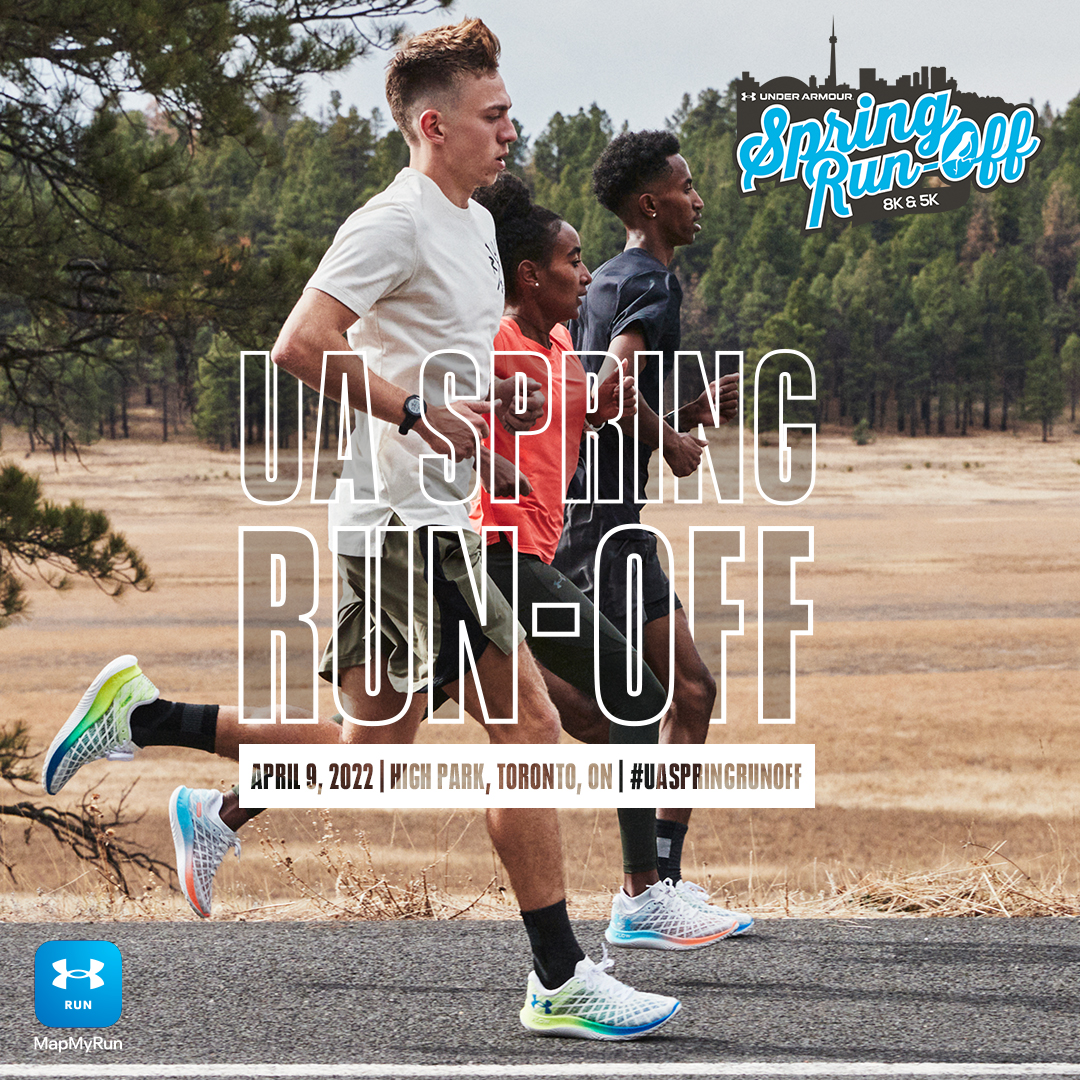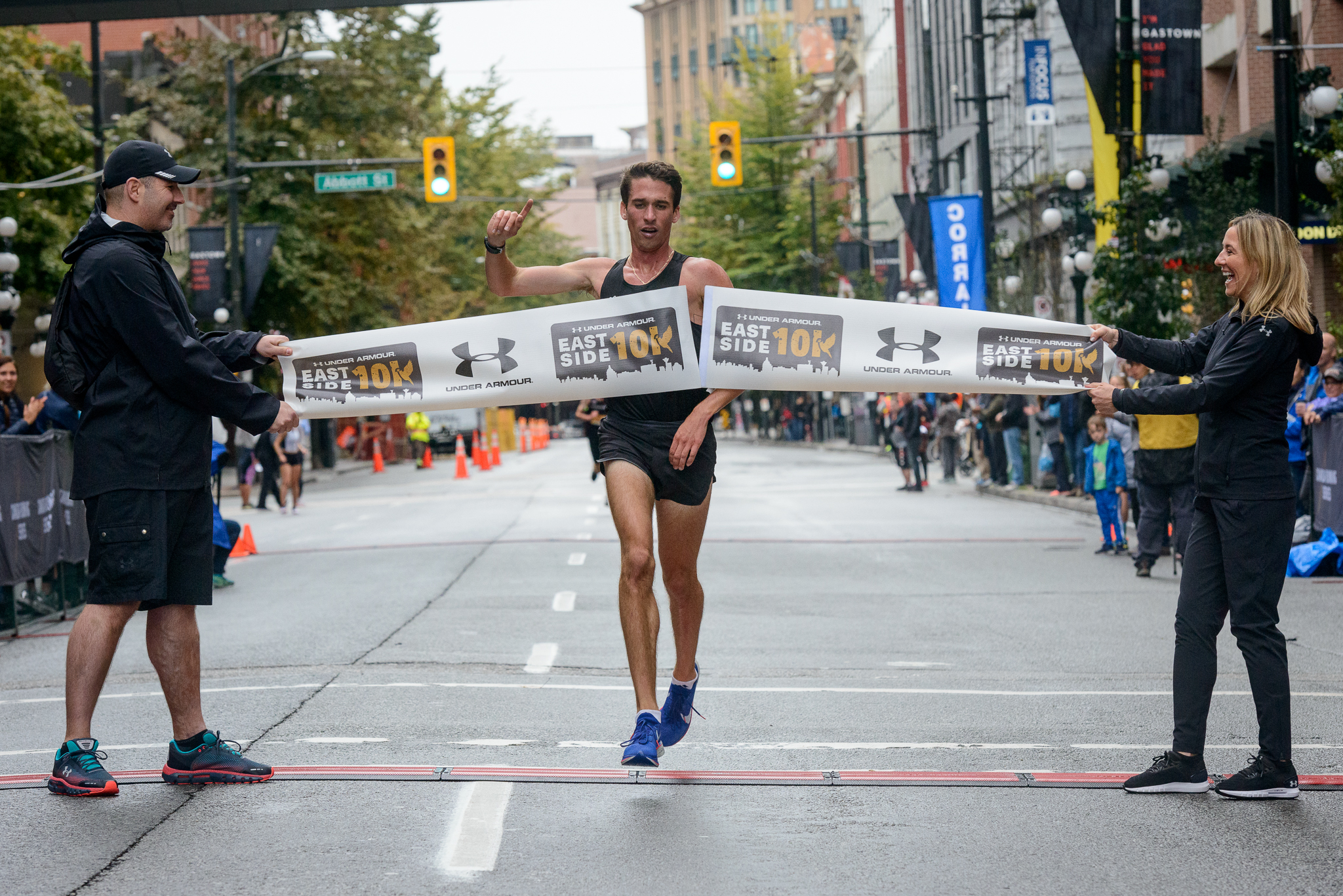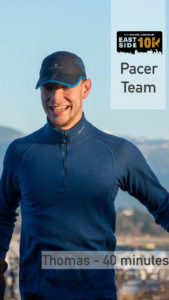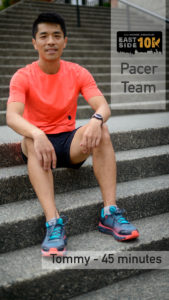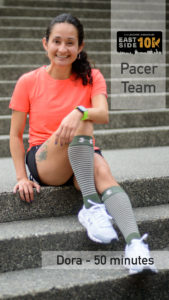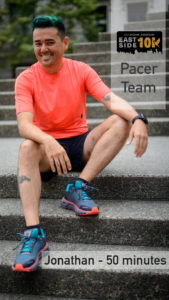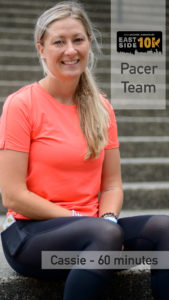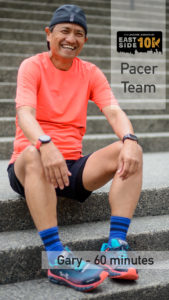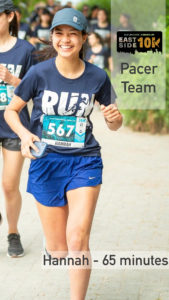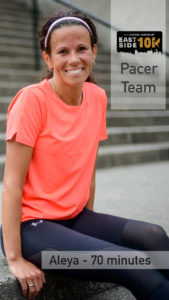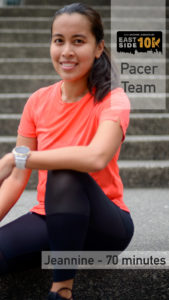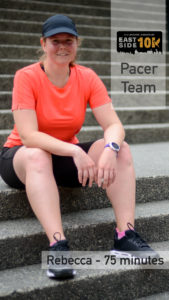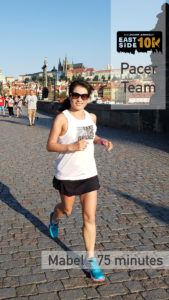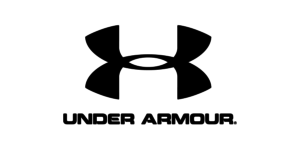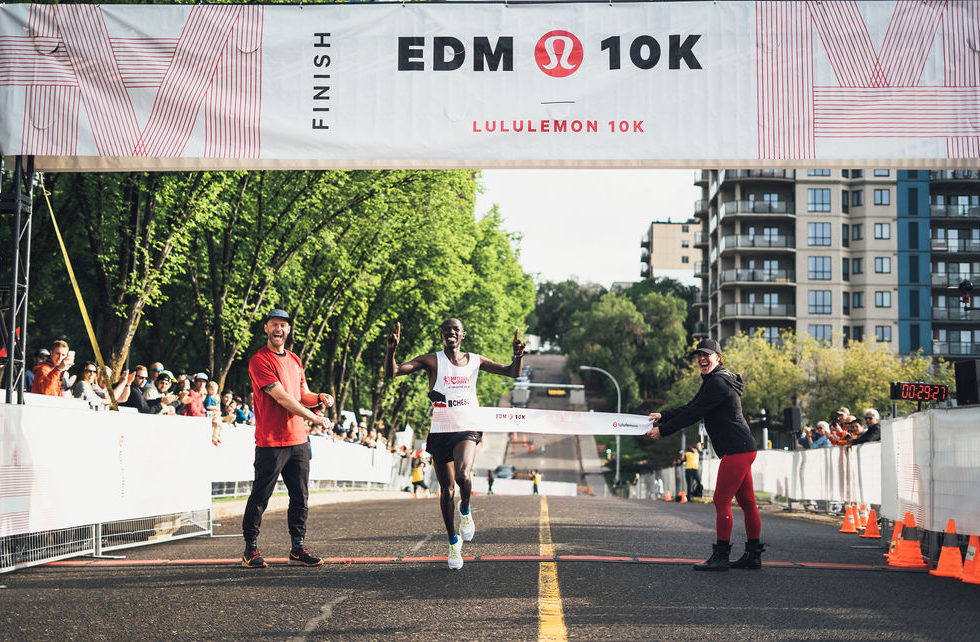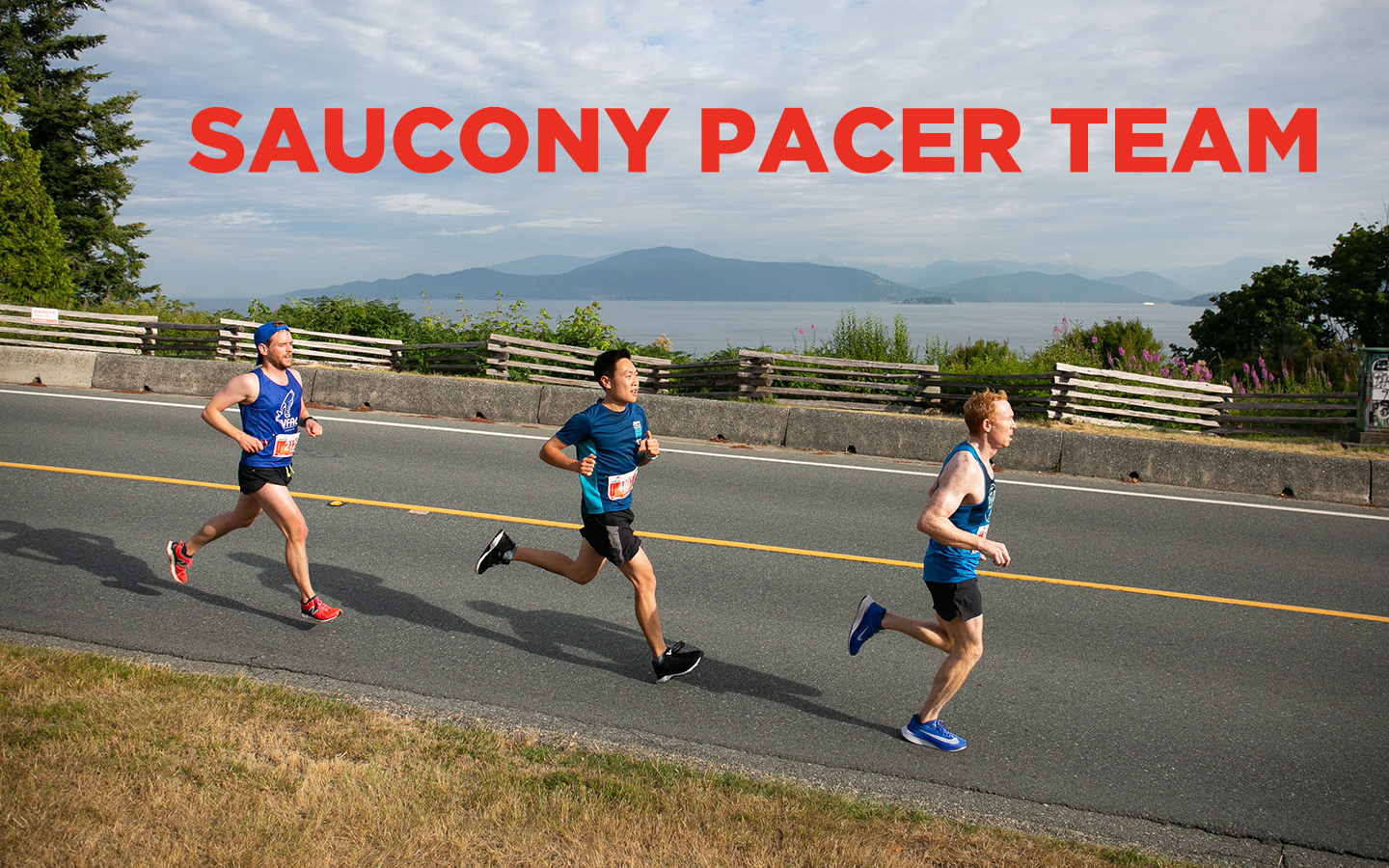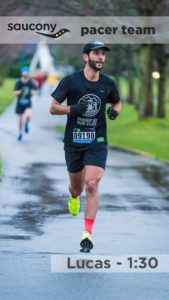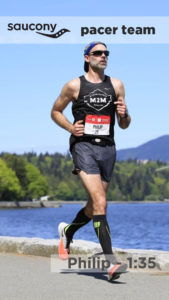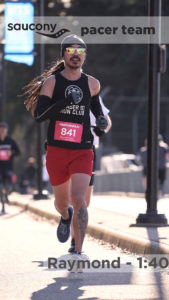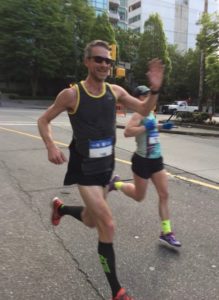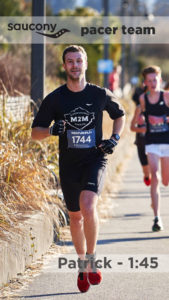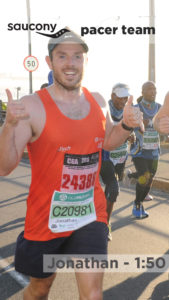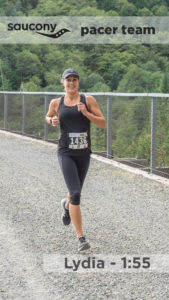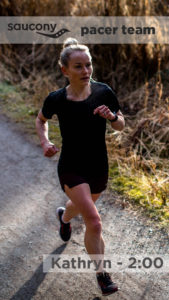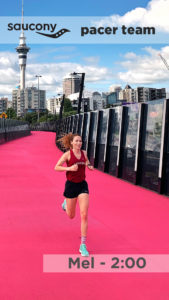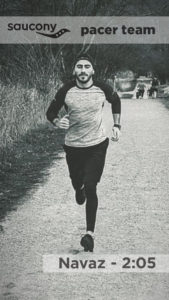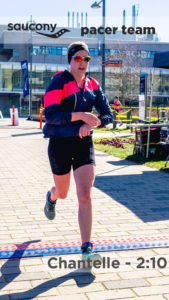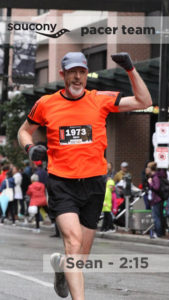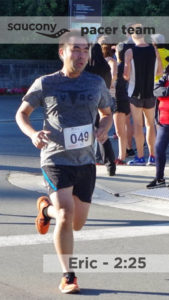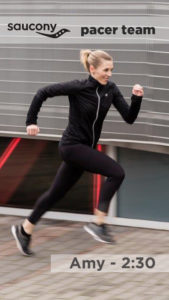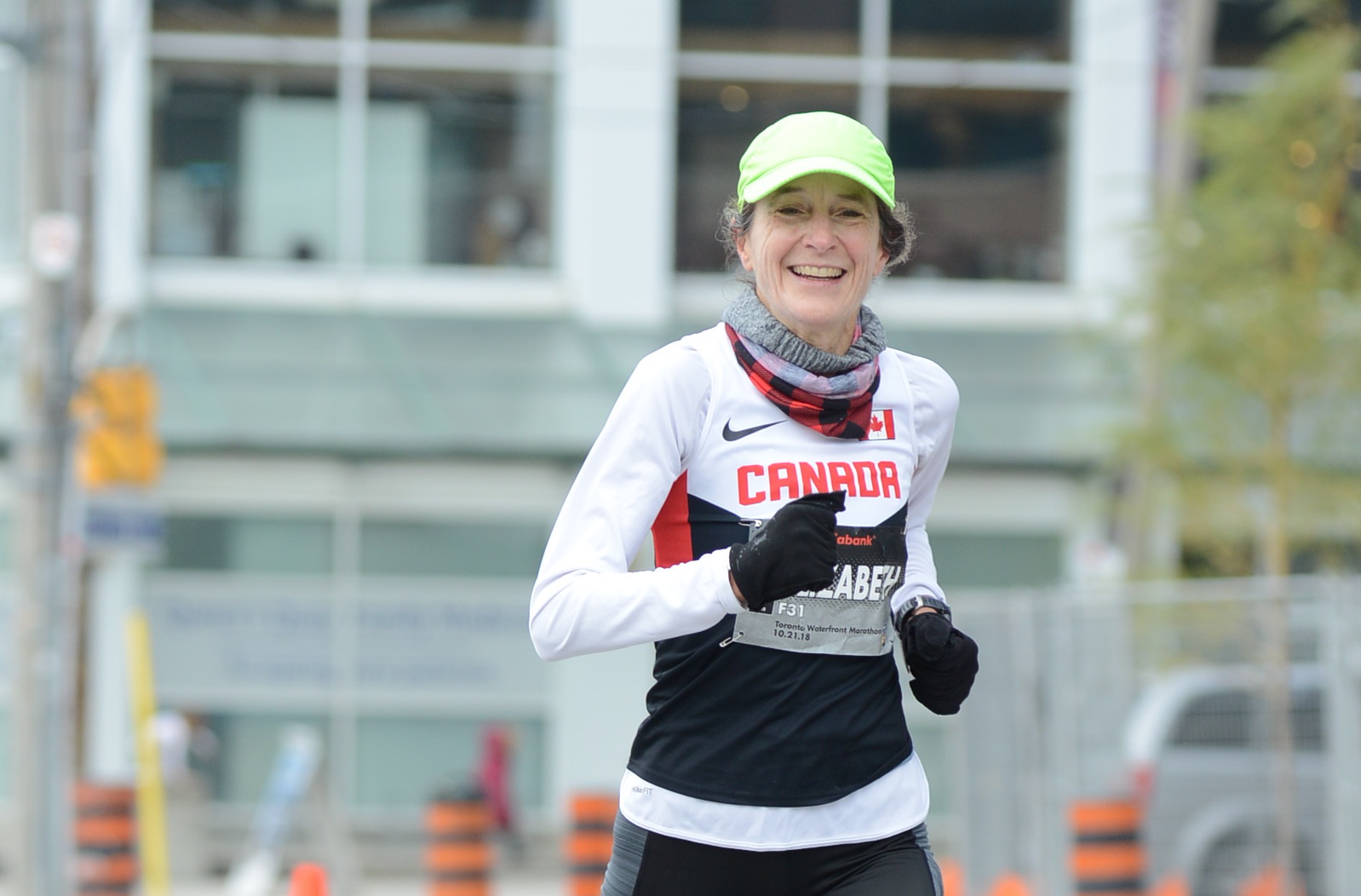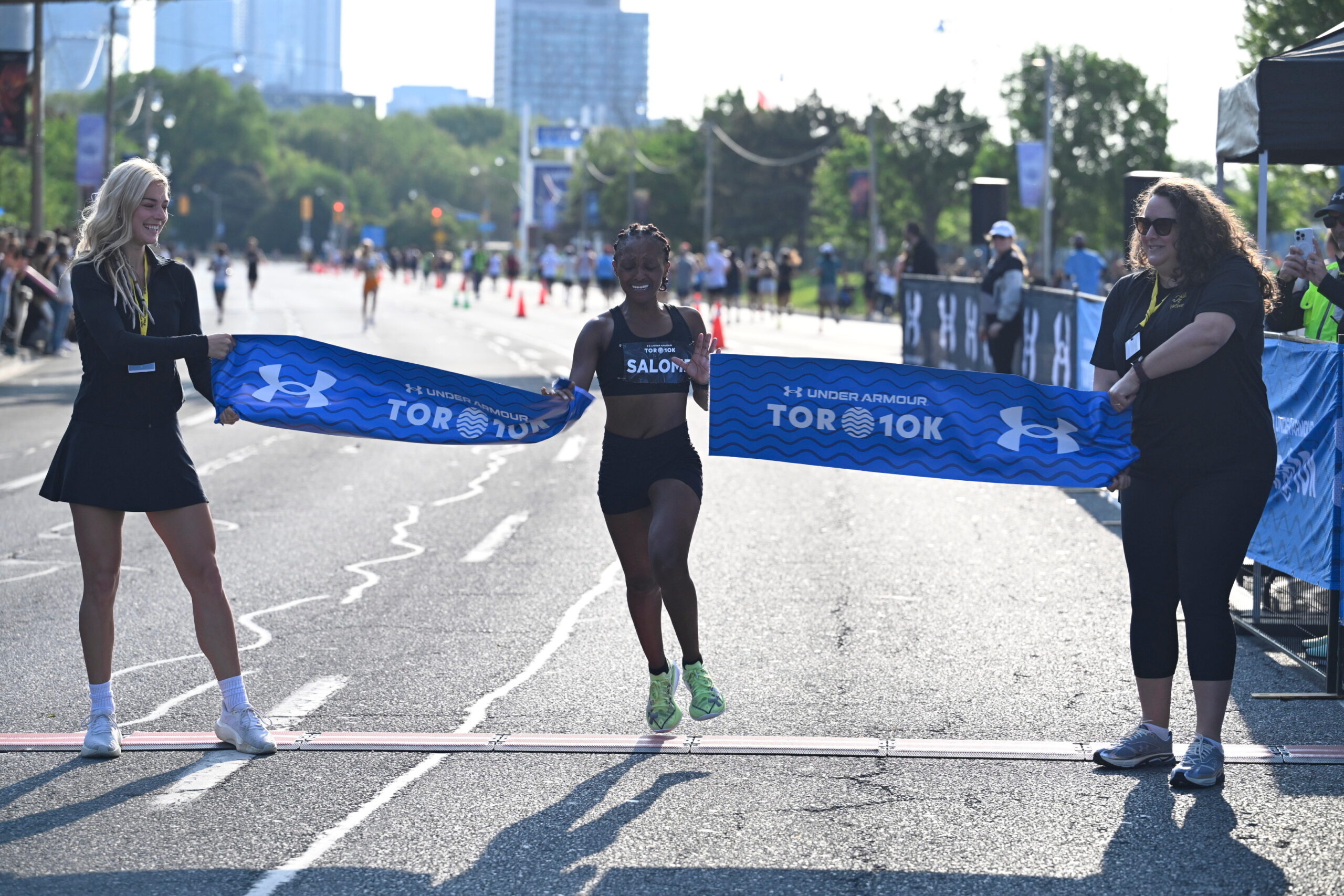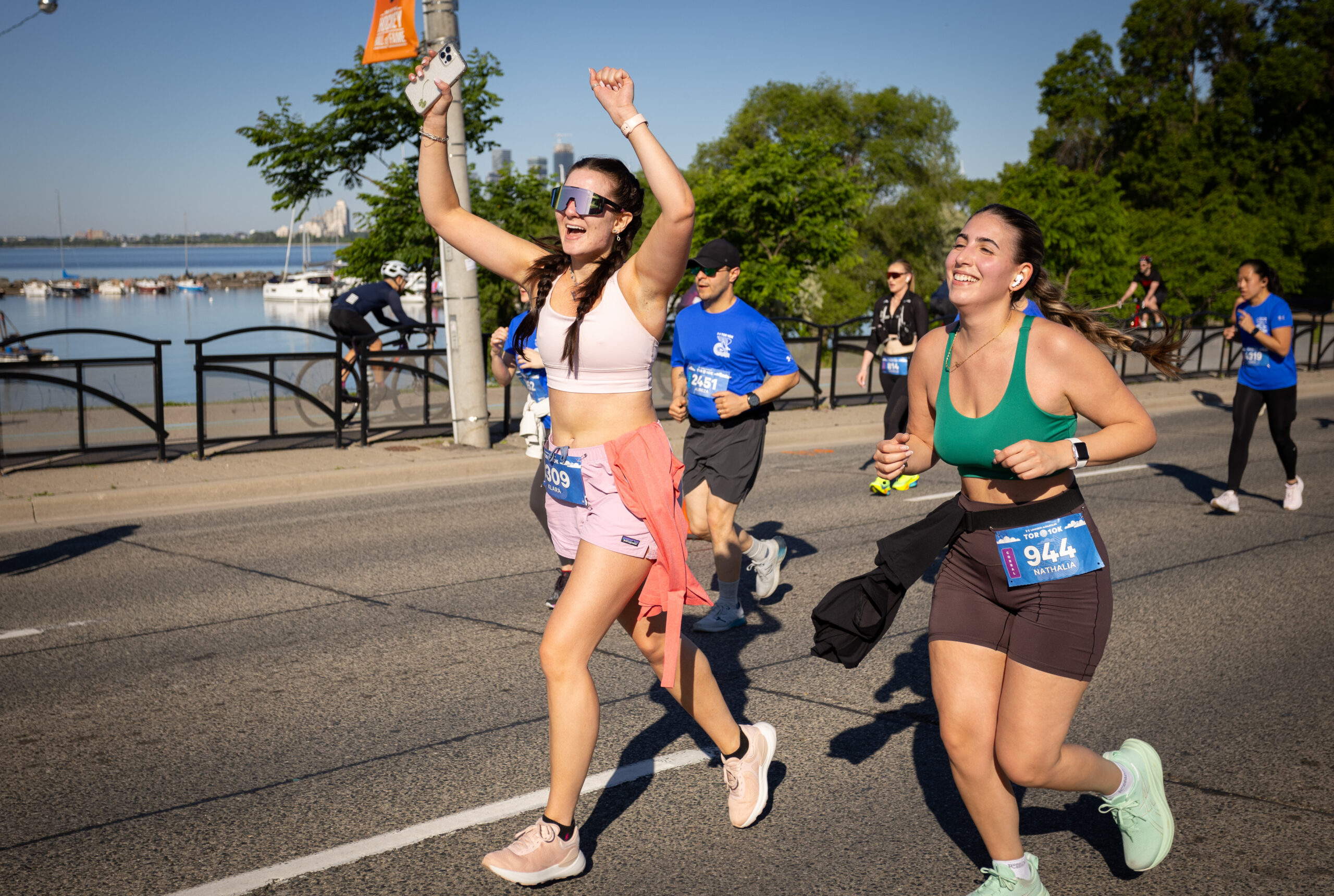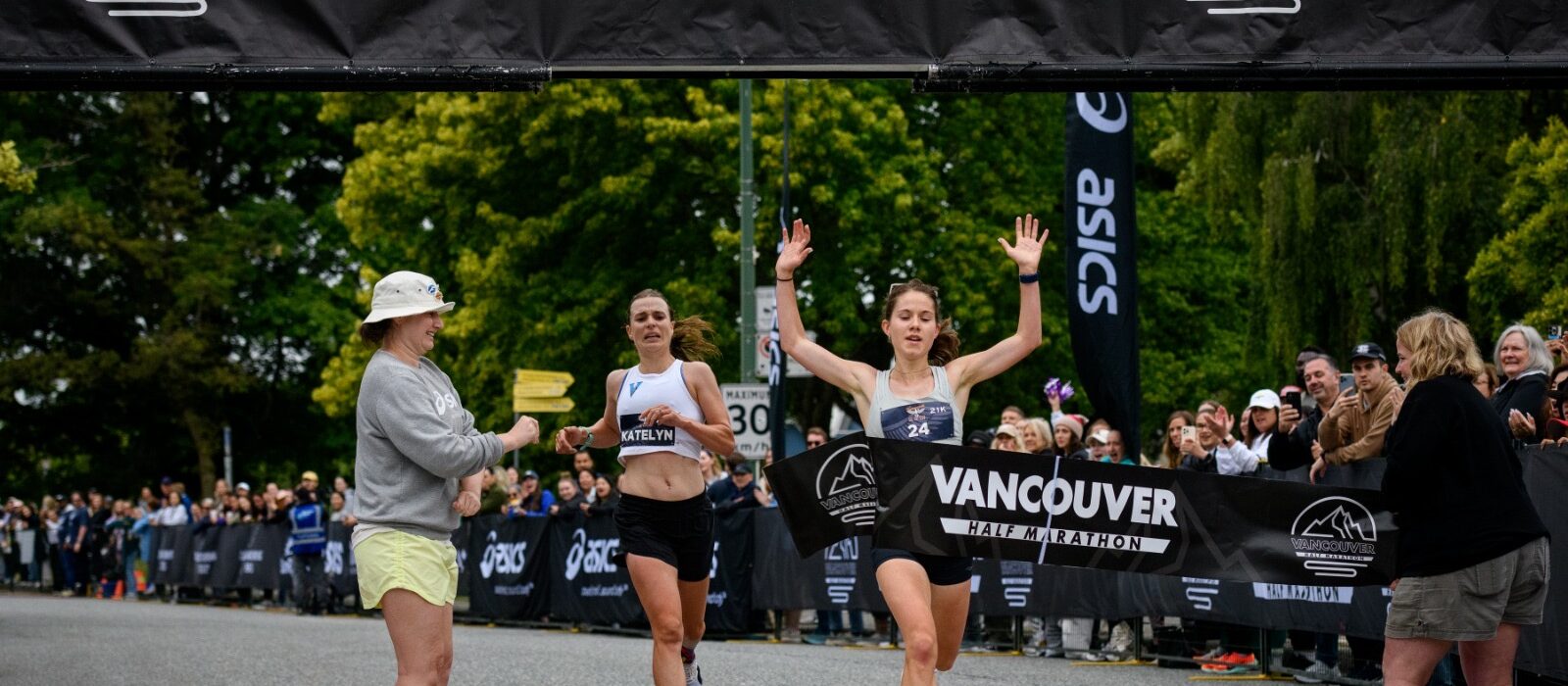Two past winners found themselves top of the table when the 2019 Canada Running Series final points were tabulated recently, an indication that these Olympic aspirants are on the right path.
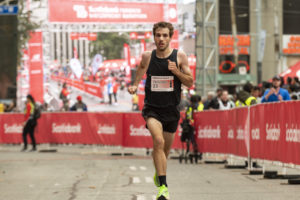
Tristan Woodfine at the Scotiabank Toronto Waterfront Marathon, 2019
Tristan Woodfine’s fine performance at the Series finale Scotiabank Toronto Waterfront Marathon earned him both a silver medal in the Canadian Marathon Championships and 52 points to take his point total to 142.
If that wasn’t impressive enough, he also took two minutes off his personal best time with 2:13:16. Along with the prestigious CRS title the Cobden, Ontario resident will receive $3,000.
Woodfine won the series for the first time in 2017 and finished second a year ago behind two-time Olympian Reid Coolsaet. His nearest challenger this year was Ben Preisner who took second ($1,500) with 119 points and Trevor Hofbauer, who snatched the Canadian Marathon Championship title with a whopping personal best and Olympic qualifying time of 2:09:51. That’s the second fastest time by a Canadian ever.
Hofbauer wound up with 112 points and receives $1,000 for finishing third overall.
Rachel Hannah, who resides in Guelph, Ontario put an injury-restricted summer aside to claim the women’s title for the first time since 2014. This year her margin of victory was just two points over Dayna Pidhoresky, 129 to 127. The latter was crowned Canadian Marathon champion in a personal best 2:29:03 which automatically puts her on the flight to the Tokyo Olympics with Hofbauer.
Woodfine, who won Toronto’s Race Roster Spring Run-Off 8K for the third straight year as well as the Banque Scotia 21K de Montreal, claims that he didn’t followed the points tally that closely.
“I try to get my three CRS races in, but I think I was so focused going into Toronto (Waterfront Marathon) and getting the marathon qualifying standard for the Olympics that I forgot about the whole series,” he explains. “After the race I thought ‘I wonder how it all ended up?’ Finishing first is always nice.”
As fate would have it Woodfine and Preisner never actually raced each other in the Series mainly due to the former’s focus on the marathon. Preisner, from Milton, Ontario, saw a breakthrough with his victory in the Scotiabank Toronto Half Marathon which was run concurrently with the marathon championship. His time there was an impressive 1:03:08.
Woodfine, who has temporarily put aside a career as a medic to focus on his running says he will put the winner’s prize to good use.
“Yes, it will come in very handy. I think I am going to make the trip to Kenya for a good chunk of the winter,” he reports, “So, yes, the money really helps. Winters in the Ottawa Valley can be brutal, lots of snow and -40C. It will be good to get away.”
He has sought advice from Reid Coolsaet, no stranger to high altitude training camps in Kenya.

Rachel Hannah at the lululemon Toronto 10K, 2019.
Although she has never trained at altitude before Hannah is also contemplating taking a couple of weeks off her job as a nutritionist at the University of Guelph to explore the opportunity.
“If I can stay healthy and am able to do a spring marathon I would like to go away and do an altitude training camp and see if I would benefit from it,” she says. “I don’t know if I will do Flagstaff, or somewhere, I don’t think I will go to Kenya yet, I want to try somewhere in the US to see if I benefit. But definitely that money will come to good use.”
Hannah admitted that her foot injury meant that running the Canadian Olympic trials marathon was out of the question so she and coach Dave Korell plotted a schedule that could put her in position to win the CRS overall title.
“We started thinking ‘what do we have to do to get maximum points?’ So, it was either come first at the Zoo 10K or the Scotiabank Toronto Waterfront Half Marathon,” she explains. As it happens, she won the Oasis Zoo 10k.
“We were following it and it’s exciting. I was disappointed I couldn’t race the marathon, but it was nice to have something else to look forward to and support all the CRS races I could. There are years where I am not able to do that. They do such a good job. It’s always competitive and there is always someone to push you.”
Kinsey Middleton the 2018 Canadian marathon champion who lives and trains in Boise, Idaho finished 3rd overall in the series.
Vancouver’s Craig McMillan handily won the men’s masters’ competition with 165 points, 60 of those coming from his fine performance at the Scotiabank Toronto Waterfront Marathon where he ran a personal best of 2:26:17. Allison Drynan was the women’s master’s winner. They each collect $500 for their respective titles.
Besides providing elite runners the opportunity to compete against one another on extremely well-organized courses the Canada Running Series also has an incredibly strong charity component. CRS Race Director, Alan Brookes, reports that the 2019 Scotiabank Toronto Waterfront Marathon alone raised $3,694,370 for local charities. That brings to $6.9 million the total money raised across the 8-races in Canada Running Series 2019. A record number of participants also ran the CRS in 2019 (69,045).
What a year we had! A record number of participants in the Series, and a huge total of almost $7 million raised for our 300 plus charities,” Brookes declares with his customary excitement. “The two lululemon races in the East and West that both sold out in less than a day and brought Canada to the forefront of an exciting ‘New Running Movement’. A movement that is bringing not only excitement but joy and celebration to the sport.
“And the four men who ran under 2:05:15 and the seven women who ran under 2:24:30 at the Series finale, the Scotiabank Toronto Waterfront – made it the fastest marathon in all of The Americas in 2019, as well as the fastest marathon ever run on Canadian soil.”
Brookes also points to Trevor Hofbauer and Dayna Pidhoresky achieving the Olympic qualifying standard in the 30th anniversary year along with the incredible performances of the international athletes. Remarkably, the Toronto Waterfront Marathon was watched by 695,000 viewers in 79 countries on the live stream broadcast.
“It has been a gob-smacking, awe-inspiring 30th Anniversary year to remember,” Brookes concludes. “Thanks to everyone – athletes, guests, the CRS team and volunteers, sponsor partners, family, friends and spectators, whose passion and energy made it all happen!”
The 2020 Canada Running Series kicks off once again with the Spring Run-Off on April 4th.
For more information and to register for 2020 Canada Running Series events visit www.canadarunningseries.com
